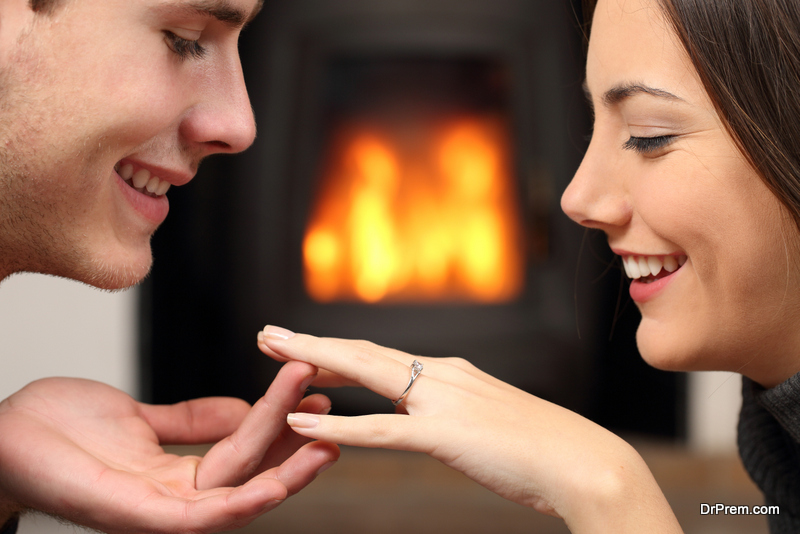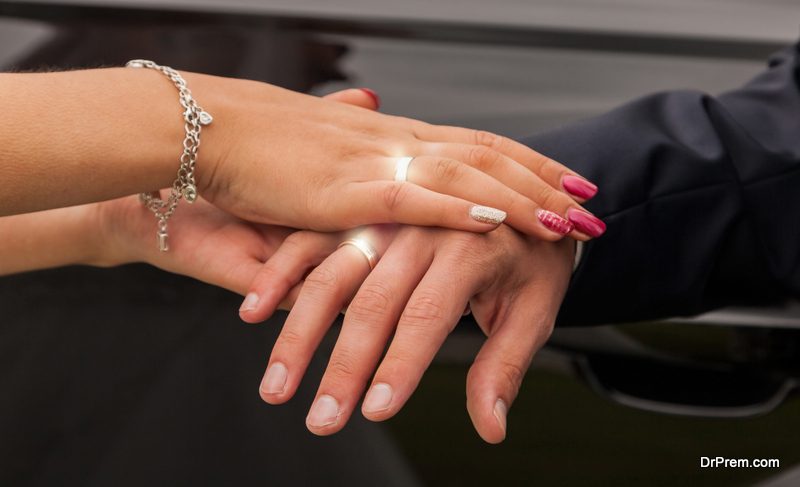Just when you thought the hard part – deciding on the perfect woman to marry – was done, life has thrown another one of its hardest challenges your way: choosing the perfect engagement ring.
Selecting a wedding ring is far easier because you can do it together. On the other hand, selecting the ideal engagement ring usually involves enormous amounts of subterfuge, secret talks with her friends and family, and Bond-like visits to jewelry stores and websites. After all, proposing is all about the surprise.
If you are feeling lost, here is our simple but comprehensive guide on how to choose an engagement ring for your girlfriend.
Step 1: How to define her style

Most ladies fall into one of five rather distinct categories:
- traditional;
- modern;
- romantic;
- stylish;
Her ring should be an extension of this character.
L.A. Laser Engraving has an extensive range of engagement rings to suit every taste, and the capacity to create a custom piece to your exact specifications, too.
Traditional
The traditional or classic engagement ring features a solitaire setting – a single diamond in the center, without distractions and embellishments. The band itself is usually unadorned also. This style is suited to a refined, ladylike personality, devoid of airs and pretensions.
Recent variation options introduced to traditional engagement ring design allow for more individual expression while maintaining its refined demeanor. Among these are peekaboo diamonds (set in such a way that they are not directly visible from the top), and diamonds set in the band.
Modern
The modern engagement ring is almost anything that you would like it to be, within reason. The trend has popularized bezel settings where the gem is set flush within the band, and the sculptured ring where the focus is less on the gem and more on the dramatically-designed band.
Modern engagement rings can even forego a gemstone altogether; however, we strongly suggest you make this decision only if you are that certain that your beloved will agree. Popular variations of engagement rings without a central diamond generally emphasize a wider band that allows for more detailing and perhaps even a setting of diamond accents.
Romantic
If your partner is a romantic at heart, you know that she has probably spent considerable time looking at rings herself. Romantics tend towards antique and vintage rings which feature very delicate bands and intricate filigree and/or milgrain designs.
Modern rings for the romantic tend to feature extensive detailing in the manner of their antique counterparts but generally are more resistant to damage. However, authentically antique rings have a touch of magic about them, and she will probably feel it.
Stylish
The extrovert loves the flash of light that catches on her jewelry; the more the better. Her vision of the perfect engagement ring is one where all eyes are drawn to her finger, and to her.
We can achieve this in a number of ways. One is to use a setting which holds the diamond higher and more prominently away from the band. Another is the setting, where many smaller gems are attached to the band via small droplets of metal; it makes for an exquisite 3-D effect and is a magnet for shimmering light.
Sporty
Do you have trouble keeping up with her? Does she love nature and the outdoors? Sporty girls are the epitome of all good things rolled into one, and they still love their feminine side.
For her, you will need a ring that does not get in the way of her lifestyle, which she can wear no matter what she is doing. The best way to achieve this is to contain the central gemstone within a bezel setting to protect it against impact. In terms of design, perhaps an element of nature that she loves, for example, leaves and flowers, might be the perfect addition to the band.
Step 2: Choice of gemstone
Diamonds are by far the most popular gemstone for both engagement rings and wedding rings. The timeless appeal of the diamond lies in both its beauty and its incredible resistance to damage, and that makes it the ideal representation of your love.
However, beauty in nature comes in many shapes and forms, and several colored gemstones are also popular. Chief among these are rubies, sapphires and emeralds. The brilliance of a red, blue or green flash of color amongst a sea of diamonds can work as a unique touch of individualistic glamour, if your future fiancee is so inclined.
We would suggest that you avoid pearls and opals as they are prone to scratches and fractures.
The recent addition of laboratory-grown gemstones to the mix has created an interesting subset of engagement rings, known to be more affordable while just as good visually as their natural counterparts.
Step 3: How diamonds are classified

The next step is to decide on the particular diamond that will be the centerpiece of the engagement ring. For this, you have to know the 4C rule: cut, color, carat and clarity.
Cut
Cut is the single most important factor that should be considered before you purchase a diamond. It refers to the angle which the lower portion of the stone (below the girdle) makes with the horizontal.
The ideal cut allows all the light that enters the facet to be reflected back out, thus giving the diamond its characteristic brilliance. A cut that is too shallow or too deep disperses the light in other directions, which diminishes the sparkle and makes an otherwise good stone look dull.
Color
The lack of color in a diamond is testament to its high quality, and is the second characteristic to consider when you buy.
The highest grade of diamond is Absolutely Colorless (Grade D). Grade D diamonds display no coloration even under magnification, and are extremely rare. Grades E and F refer to Colorless diamonds, but very minute traces of color may still be detected in them by experts. They are also very rare.
Near Colorless diamonds are given Grades G and H. They usually seem colorless unless placed beside an actual colorless diamond. These grades offer the best value for money. Grade I and Grade J diamonds are also good value but may show a distinguishable warm color. Diamonds of grades K to Z have elements of color that the naked eye can discern.
We recommend that you pair a colorless or near colorless diamond with a band that enhances its clarity; avoid yellow and pink gold and opt for platinum and white gold instead.
Carat
Carat is a unit of weight equal to 0.007 ounces or 0.2 grams. It is often mistakenly thought to be a measure of size.
Obtaining the best diamond for your budget involves considering carat and cut together. A well-cut design can make a diamond of lesser carats appear larger, while the reverse is also true. This is because the amount of light reflected out of the top a diamond is critical to the impression it gives.
Clarity
Clarity refers to the extent to which imperfections within the diamond mark its appearance. In the overwhelming majority of cases, these imperfections called ‘inclusions’ cannot be detected without using a magnifying glass. As such, clarity is the least important of the 4 Cs.
However, on the side of caution, choosing only diamonds which have been marked with a clarity grade of VS1 or better.
Step 4: Choice of gemstone shape, her ring size, and the band
Gemstones are cut in a wide variety of shapes, from the traditional round, princess and oval to the modern variations of pear- and heart-shaped stones. While personal preference is, of course, a significant factor, it must be paired with the 4 Cs, particularly cut and color to obtain the ideal ring.
This is territory where her close friends and family may have to be involved as they will be able to share her preferences with you. They may also be of help in telling you her ring size; an alternative may be to quietly take one of her rings to a jewelers and have it measured.
The other essential element of the engagement ring is the band. As we discussed earlier, a diamond is best paired with a silver or white metal. However, you can overcome this if you opt for a band of another color by having a white metal setting for the diamond.
Platinum is the preferred metal of choice for both engagement and wedding bands, not only because it is the most precious of metals but also due to its hypoallergenic properties and resistance to corrosion and fading.
Gold is the all-time favorite for rings of sentimental value. It comes in various grades to suit all budgets, and in a variety of colors to cater to personal preferences. Yellow, white and rose gold are common and green gold is the newest addition to the range.
The Perfect Ring for Your Girlfriend, and You
Purchasing a piece of jewelry is about finding the perfect balance between purpose and budget. We hope that this guide to things to consider before proposing to your girlfriend will help you choose a ring that you will both love and cherish for your life as one.
Article Submitted By Community Writer






